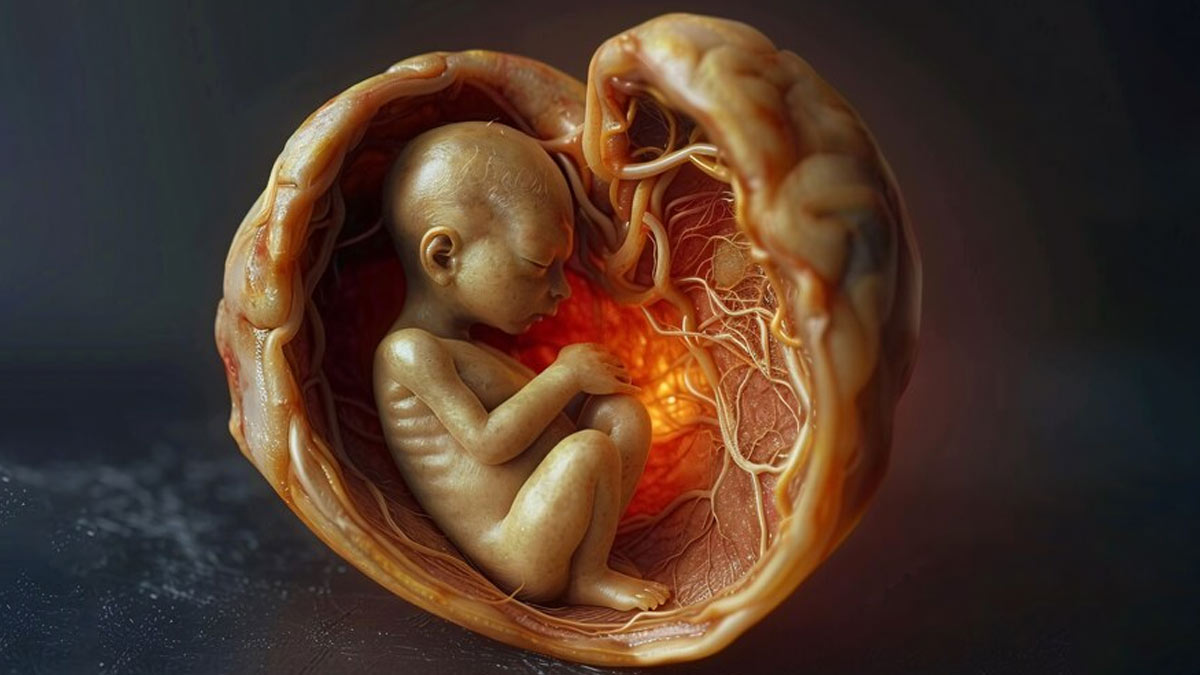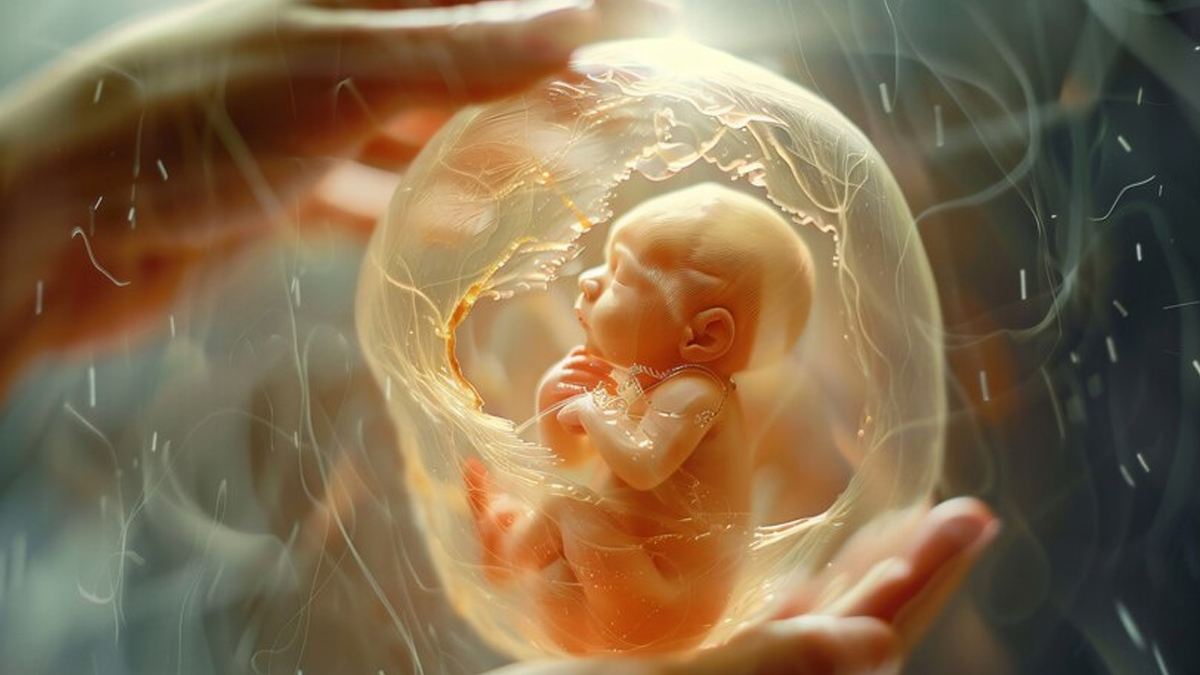
In a bizarre incident, a baby was born on Wednesday in Champaran district, Bihar, with several congenital deformities. The child's eyes were covered with flesh, the body was coated in a thick white crust, and teeth were visible inside the gums. Due to the unusual appearance, onlookers compared the child to an alien. Doctors have not yet explained the cause of these abnormalities, labelling it as a congenital deformity.
Table of Content:-
To understand the abnormalities, OnlyMyHealth interacted with Dr R Kishore Kumar, Paediatrician and Neonatologist, Cloudnine Group of Hospitals, Bengaluru.
Dr Kishore Kumar explained, “The congenital deformity is a combination of two rare conditions: Aplasia Cutis Congenita (ACC) and Natal Teeth. While these conditions are not typically related, the combination could present a uniquely challenging scenario for a newborn and most often than not this represents a chromosomal abnormality in the sense baby's will be positive for Trisomy 13 - meaning on the 13th chromosome there will be 3 in number instead of 2.” Let’s delve into each of these conditions individually and explore their implications.
Aplasia Cutis Congenita (ACC)
Aplasia Cutis Congenita (ACC) is a rare congenital condition characterised by the absence of skin at birth. The affected areas can range from small, localised patches to large regions of the body but most of the time it involves the head and sometimes trunk. Here’s an in-depth explanation ACC given by Dr Kumar:
Causes and Risk Factors
Genetic factors: ACC can be associated with genetic mutations, and in some cases, it runs in families as it may be confused with other dermatological conditions soon after birth like epidermolysis bullosa.
Environmental factors: Teratogenic factors during pregnancy, such as drug use, infections, or trauma, may contribute to the development of ACC.
Syndromic associations: ACC can occur as part of a syndrome, such as Patau's syndrome or trisomy 13 or Adams-Oliver syndrome, which involves limb abnormalities and vascular defects.
Also read: Breastfeeding And Allergies: Understanding The Possible Allergies That Infants May Get
Clinical Presentation
Location: ACC most commonly affects the scalp, but it can also appear on the trunk, limbs, or other parts of the body.
Appearance: The lesions can appear as superficial erosions, deep ulcerations, or scars. In severe cases, the underlying bone or structures may be exposed.
Associated anomalies: Other congenital anomalies, such as limb deformities, can be present.
Diagnosis and Treatment
Diagnosis: Diagnosis is typically made based on clinical examination. Imaging studies may be required to assess the depth and extent of the lesions.
Treatment: Dr Kumar said, “Treatment should involve Genetic counselling to the affected families & avoidance of such births in the future. Also other treatment aspects depend on the size and severity of the lesions. Small lesions often heal spontaneously with minimal intervention. Larger or deeper lesions may require surgical intervention, including skin grafts. Wound care and prevention of infection are critical.”

Natal Teeth
According to Dr Kumar, Natal Teeth are teeth that are present at birth. This condition in isolation is not rare and can pose several challenges:
Causes and Risk Factors
Genetic factors: Dr Kumar said, “Natal teeth can be associated with certain genetic conditions and syndromes but usually are isolated abnormalities.”
Environmental factors: In some cases, environmental factors during pregnancy may play a role, although the exact mechanisms are not well understood.
Clinical Presentation
Location and number: Natal teeth are most commonly found in the lower front gums and are usually part of the primary dentition. They can be singular or multiple.
Appearance: Natal teeth may be small, yellowish, and poorly formed. They may be loosely attached and prone to falling out.
Complications
Feeding difficulties: Natal teeth can interfere with breastfeeding, causing discomfort for the mother and difficulty for the infant.
Risk of aspiration: Loose natal teeth pose a risk of being aspirated into the lungs if they detach.
Oral ulcers: The presence of natal teeth can cause ulcers on the tongue or gums due to friction.
Management
Evaluation: A thorough dental and medical evaluation is necessary to determine the appropriate management strategy.
Removal: If the natal teeth are loose, causing feeding difficulties, or posing a risk of aspiration, Dr Kumar said that they may need to be removed.
Monitoring: Regular monitoring is essential to address any complications that may arise and to ensure proper oral development.
Immediate Care
Stabilisation: Initial care focuses on stabilising the newborn, managing the skin defects, and addressing any immediate complications from the natal teeth.
Infection control: Preventing and treating infections in the areas of absent skin is critical, as open lesions are highly susceptible to bacterial invasion.
Long-term Care
Skin reconstruction: For extensive skin defects, staged surgical interventions may be required to provide adequate coverage and promote healing.
Dental care: Regular follow-up with a paediatric dentist is necessary to monitor the development of the teeth and address any oral health issues.
Conclusion
The combination of Aplasia Cutis Congenita and natal teeth in a newborn represents a rare and challenging medical condition. Careful, multidisciplinary management is essential to address the immediate and long-term health needs of the infant. Through vigilant care and appropriate interventions, it is possible to manage these conditions and improve the overall prognosis for affected newborns.
Also watch this video
How we keep this article up to date:
We work with experts and keep a close eye on the latest in health and wellness. Whenever there is a new research or helpful information, we update our articles with accurate and useful advice.
Current Version
